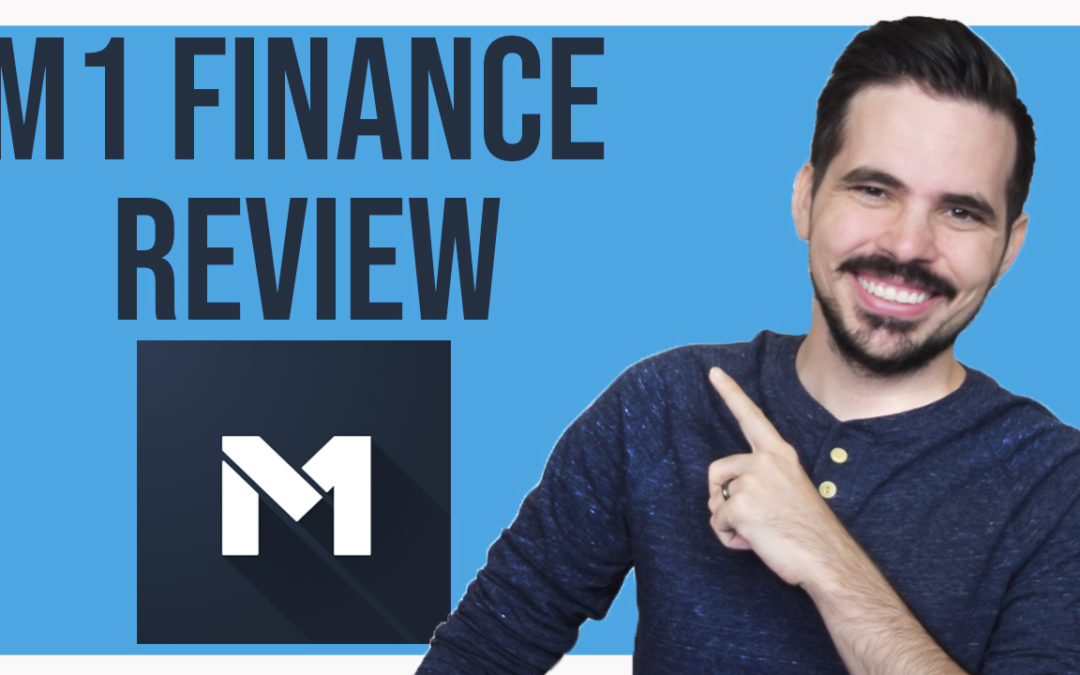Some of the links included in this post are affiliate links. Read my disclosure policy.
I’ve been using M1 Finance now for the past eight months and wanted to share my thoughts on the investing platform. I am not a financial advisor and these are just my options, so please make sure to talk to a cpa if needed.
Let’s start with some of the basics.
M1 Finance is a full-service robo-advisor online brokerage that offers free trading through its website or mobile app. You are able to buy stocks, ETFs, and bonds. Its business model is similar to other recent investing platforms such as Webull and Robinhood, but with some unique benefits.
Pricing
This is the biggest thing to note when it comes to using M1 Finance. It’s FREE to trade!!! I get really excited about that because I remember a time when buying or selling a stock was upwards of $9.95 a trade, YIKES! So you can’t beat free. Now I know what you might be thinking, well how can it be free? How would M1 Finance make money? They make money a few different ways including their M1 Borrow and M1 Spend features as well as directing order flow (making money by placing the orders) and lending shares to short-sellers. Effectively all these help make the basics of the platform FREE for you.
Buying Shares
This is a two-parter.
First is probably my favorite thing about M1 Finance and that is the ability to buy fractional shares! In case you’re unaware of what that is, it’s where you can buy smaller portions of a whole share.
Let me give you an example: I love Tesla and want to own a part of the company. On most other trading platforms in order to have ownership, you have to pay the full trading price if you want to buy a share. With M1 Finance you can buy small fractions of a share with Tesla. In my portfolio, you can see that I have 0.05569 (5%) of 1 share. By far one of my favorite features!
To some, this might not be that important, but I believe that getting started even with a small amount can make a big difference over time. M1 makes that easy because if you can only put in $20 every paycheck that $20 gets invested. Other platforms you would be limited in the stocks you can buy or you’d have to let the funds sit there until you had enough to purchase a full share.
The second thing with buying shares with M1 Finance is that you can only trade once per day. This might be a downside for some investors as they might want to perform multiple trades a day. But for myself, I don’t mind this at all.
Pies
This feature with M1 is a neat one. I haven’t seen it with other online investing platforms. Pies. Not the ones that you bake in the oven (although I could eat a pecan pie right about now). The pie is your overall portfolio and the funds you invest in are the slices of this pie.
And without trying to lose you, you can actually create pies within your main pie. Effectively, you can create sectors for the funds to be placed in. They can mimic the market sectors such as the energy sector, tech sector, communications sector, etc or make your own based on what companies you put in. In the photo below you can see my pies within the main pie.
I love this feature since I can group of stocks that I want together, the neat part is I also get to see how those stocks are performing as a group overall. It gives me some great insight into how a particular sector might be doing.
Account Types
M1 has several options when it comes to account types. You can open up a regular taxable investment account, a joint investing account, a trust account, and retirement (traditional, Roth or SEP IRA or rollover).
Getting started
Since the platform is free to use, you don’t have to worry about any fees for getting started. The minimum you need for a regular taxable investment account is $100 and for retirement $500 will be needed to get started.
Once your initial amount is put in you can transfer whatever amount you want into the account. Although you will need a minimum of $10 for the money to be invested. Otherwise, anything less than $10 will sit in the cash balance. One downside to M1 in comparison to Robinhood is that you don’t get instant access to your funds when placing a deposit. Robinhood actually gives you access to upwards of $1,000 to invest with before the money is officially transferred, so you don’t miss any opportunities if the market was down.
Dividends
Dividends. Probably one of my favorite words in the English language! Dividend payouts work a bit differently on M1 Finance than other investing platforms. Since M1 offers fractional shares, your dividends are paid out based on your overall shares, including the fractions. This means if a company pays out $0.10 a share and you own half of 1 share, you’ll get paid $0.05 in dividends.
M1 also gives you the opportunity to reinvest those dividends back into your portfolio with their auto-invest feature (also known as DRIP) which we’ll talk about in the next section. The one downside to some investors is that the reinvested dividends get returned to the whole portfolio and not necessarily back into the company that paid said dividends. This doesn’t bother me so much, although it would be nice if that would be an option.
Auto-Invest
Auto-investing is when your account balance hits over $10 (default), that can be from deposits, dividends, or if you sold a stock. Now, this feature can either be turned off if you wanted or the dollar amount can be raised if you prefer.
Target Percentages
When you create your pie (or pies within the main pie like me). You get to give a target percentage to each stock (or pie) to equal out to 100%. This means if you have 4 stocks or ETFs you can set each one to be 25% of your pie. You can also, if you wanted, set 2 funds at 40% each and the other 2 at 10% each. Whatever works best for you and your investing style. These targets will determine how much money goes into each fund.
Actual % vs Target %
So what happens when a stock or an ETF starts doing really well and is above its target? A few things happen, the pie graph will look a bit funny, but second little to no money will most likely get deposited into that fund. And because a fund going over its target means another one is now under, the majority of the next deposited funds will be placed into this fund or funds.
I see this as a great thing personally because if a fund or a sector of funds is doing really well aside from the market just moving up, I tend not to invest more. But there is a solution if you did want your next deposit to go into that fund or set of funds. You can adjust the target %. Simple and easy.
Rebalancing
*Talk to a financial advisor as mention at the beginning about this next part.
This feature I stay away from personally. This is used when you either adjust to new target %’s or funds are off from their targets in general. You can hit the rebalance button to sell off funds that are above their target and buy into funds that are below. The reason I don’t do this is that it creates a taxable event since you’re buying and selling.
Website and App
I personally use both the website and app when checking my account. Both do a good job of navigating me through my account, although it’s slightly easier on the website. Creating multiple sectors (pies) is best done on the website.
User interface/Research
The user interface is fairly basic and easy to use. I think most novice investors can figure things out fairly quickly. For the intermediate investors, such as myself there are a few things lacking such as the amount of detailed information about a particular stock or ETF. You can always head over to websites that offer more detailed information, so it’s not a make or break.
For beginner investors
For those who may just be getting started with investing, M1 offers what they call “Expert Pies”. These pies are curated with specific goals in mind. They have a general investing pie, plan for retirement pie, and even responsible investing pies to cater to many different investors to get you started.
Other features
This review didn’t cover some of the other features on M1 Finance such as the borrow and spend features. Possibly in the future, I can talk about them, but for today I wanted to focus on the investing of M1.
Overall
With everything we covered today, I hope I didn’t lose you along the way (You made the cut if you’re reading this part). I hope this was a simple and easy review. As mentioned I’ve been using M1 Finance for some time now, and there are many great features about the platform that really stand out to me in comparison to others in this area such as Webull and Robinhood (which I will be covering in future posts). The biggest features are that the platform offers FREE trading, has fractional shares, and DRIP (the reinvesting of dividends). Some of the disadvantages of M1 Finance are the delay in access to your funds in comparison to Robinhood, the reinvesting of dividends only occurs when the cash balance is over $10, and information for each fund doesn’t go as in-depth.
Overall, I have been loving M1 Finance and it is the place where I am building up my dividend investing portfolio for the long haul.

M1 Finance: 4.5/5
Click here to sign up for M1 Finance today
Thank you for taking the time to read my review of M1 Finance.
Your friendly neighborhood money nerd, Denis Trufin











